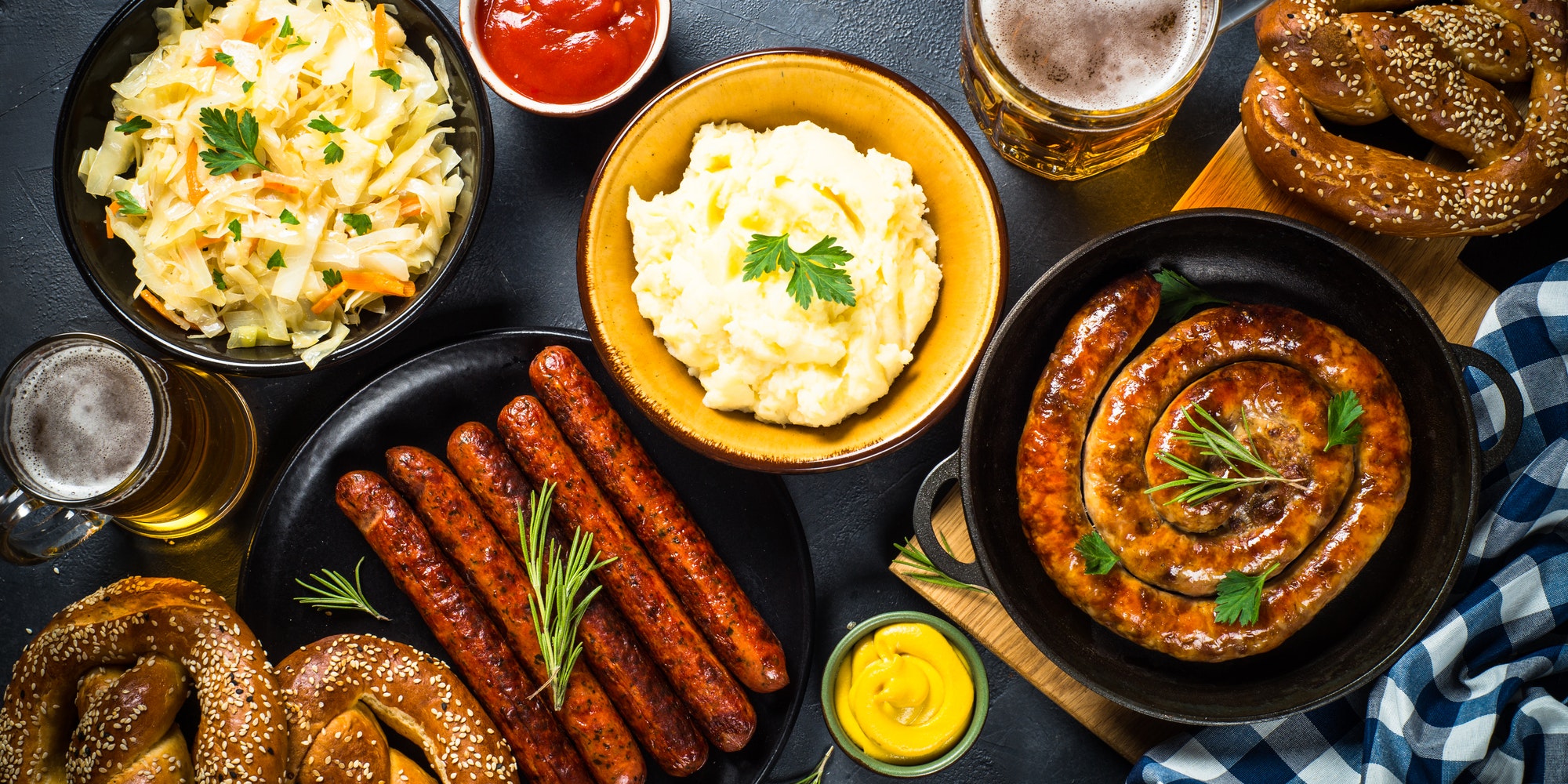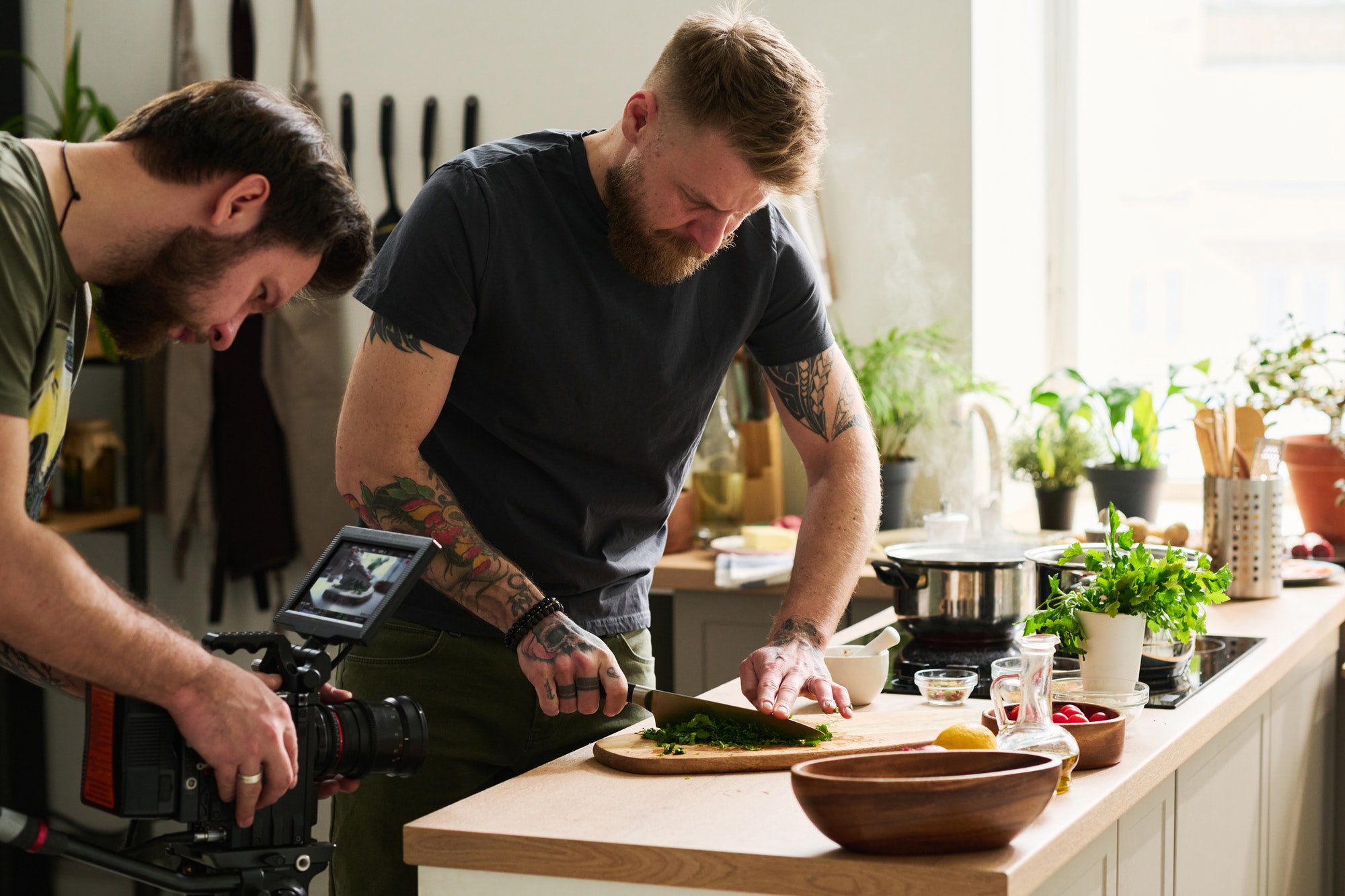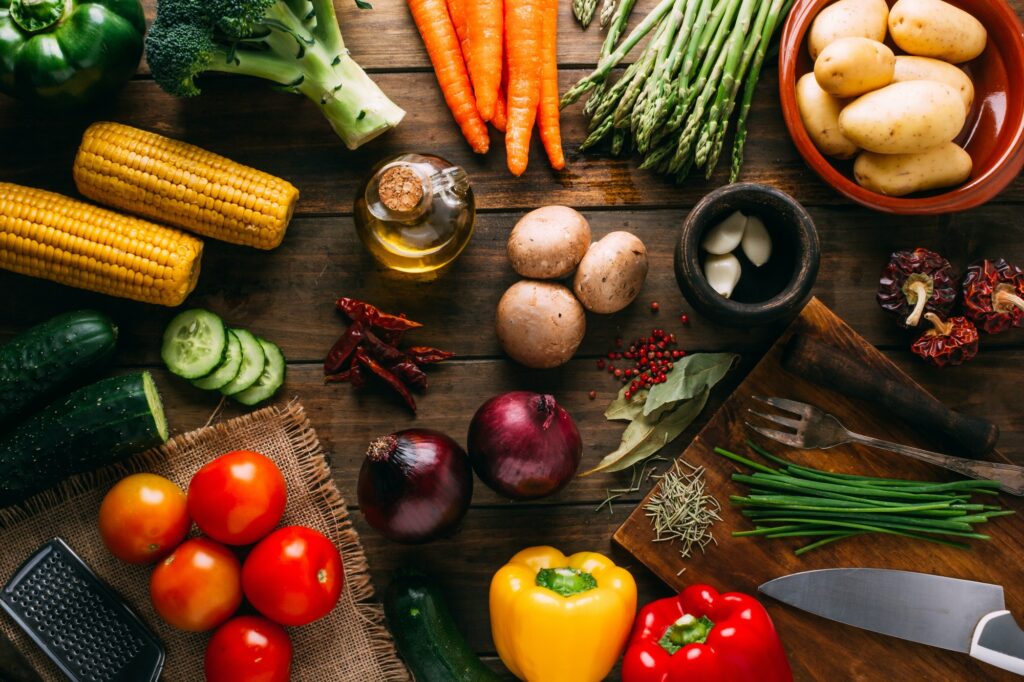Capturing attention is essential for any business, especially in the competitive world of food. A plate piled high with the most mouthwatering dish might be a culinary masterpiece, but if it remains unseen, its potential to tantalize taste buds and attract customers vanishes. This is where the magic of food video production comes in. For business owners and marketing managers, it’s no longer a question of “if” to utilize food video production, but rather “how” to harness its power to elevate your brand. Contact us
Why Food Video Production? A Recipe for Success
Forget static images and dry text descriptions. Food video production brings your culinary creations to life, igniting viewers’ senses and creating an irresistible urge to bite into the screen. But the benefits extend far beyond simply showcasing your menu:
- Boost Brand Awareness: Engaging videos get shared, liked, and commented on, expanding your reach and putting your brand front and center in a crowded digital marketplace.
- Drive Engagement: Captivating visuals and storytelling spark emotions and forge a deeper connection with your audience, fostering loyalty and advocacy.
- Increase Sales: Studies show that viewers are more likely to purchase after watching a product video, and food videos are particularly effective in triggering that “buy now” button click.
- Improve SEO: Google loves video content, and embedding videos on your website and social media channels boosts your search engine ranking, making you more easily discoverable.
- Showcase Uniqueness: Stand out from the competition by highlighting your culinary artistry, ingredients, and atmosphere, showcasing what makes your food special.

The Ingredients for a Winning Food Video:
Now that you’re convinced, let’s delve into the essential ingredients for crafting food videos that tantalize taste buds and drive results:
- Concept and Story: Every good video starts with a clear concept. Are you highlighting a signature dish, showcasing your farm-to-table philosophy, or inviting viewers into your bustling kitchen? Define your message and build a narrative that resonates with your target audience.
- Visual Storytelling: Food is inherently visual, so let your camera feast on its beauty. Capture close-up shots of fresh ingredients, sizzling pans, and plating artistry. Utilize slow-motion for dramatic effect and don’t shy away from showcasing the passion and skill of your chefs.
- Sound Design: Sound plays a crucial role in creating a multi-sensory experience. Crisp crackling, bubbling sauces, and the rhythmic chopping of vegetables add layers of immersion. Consider incorporating upbeat music or a voiceover narrator to further enhance your story.
- Editing Magic: The editing room is where your video truly comes alive. Expert trimming, transitions, and color grading can transform raw footage into a polished masterpiece. Don’t be afraid to experiment with different styles and pacing to keep viewers engaged.
- Platform Optimization: Tailor your video format and length for different platforms. Short, snappy clips for Instagram, longer tutorials for YouTube, and behind-the-scenes stories for Facebook Reels provide variety and cater to specific audience preferences.

Beyond the Basics: Advanced Techniques for Food Video Production
Once you’ve mastered the fundamentals, consider these advanced techniques to take your food videos to the next level:
- Drone Cinematography: With the use of drone cinematography, it’s now easier than ever to capture stunning aerial shots that provide a unique perspective of your restaurant, farm, or food truck. This cutting-edge technology allows you to present your business from angles that were previously impossible to achieve. Whether it’s a sweeping view of your vineyard or a bird’s eye view of your bustling food truck, drone cinematography offers a captivating experience that will leave your viewers in awe.
- Time-Lapse Photography: Highlight the artistry and skill involved in food preparation with time-lapse photography. By condensing hours of meticulous cooking into a short, mesmerizing sequence, viewers are able to witness the transformation of raw ingredients into a beautiful, finished dish. This technique offers a unique insight into the culinary process, showcasing not only the end result but also the journey it took to get there.
- Stop-Motion Animation: Infuse some fun into your content with stop-motion animation. This technique can bring your ingredients to life in a playful and quirky manner, perfect for engaging your audience on social media platforms. Whether it’s a carrot chopping itself or a dough rising as if by magic, stop-motion animation is a creative way to showcase your food and the fun side of your brand.
- Live Streaming: Connect directly with your audience through live streaming. This interactive feature allows you to host real-time cooking demonstrations, answer questions during a live Q&A session or unveil exclusive recipe reveals. Live streaming is a fantastic way to build a strong relationship with your audience, fostering a sense of community and engagement. It also provides an opportunity for you to showcase your expertise and charisma, making your brand more relatable and personal.Tools and Resources for Budget-Conscious Businesses
Food video production doesn’t have to break the bank. With smartphones boasting impressive camera capabilities and a plethora of free editing software available, you can create high-quality content even on a tight budget. Here are some helpful resources:
- Smartphone Gimbal: Stabilize your shots and achieve professional-looking footage with a budget-friendly smartphone gimbal.
- Free Editing Software: Explore user-friendly editing software like DaVinci Resolve and iMovie to edit your videos with ease.
- Stock Music and Sound Effects: Enhance your videos with royalty-free soundtracks and sound effects without breaking the bank.
- Collaboration Platforms: Leverage online collaboration platforms like Trello or Asana to streamline your video production process with your team.
Remember, the key to successful food video production is to focus on telling a story, showcasing your passion, and connecting with your audience on an emotional level. With these tips
, you can create engaging and compelling food videos that will captivate your viewers and inspire them to try your recipes.
1. Telling a Story: Every successful food video tells a story. It could be the story of how you discovered a unique recipe, the history behind a family dish, or the process of creating a culinary masterpiece. Use the power of narrative to engage your viewers and make them feel like they’re part of your cooking journey. You could start by setting the scene, introducing the characters (which could be the ingredients), discussing the conflict (perhaps a cooking challenge), and ending with a resolution (the final dish).
2. Showcasing Your Passion: Passion is contagious, and viewers are more likely to engage with your content if they can see how much you love what you do. Show your enthusiasm for cooking through your expressions, tone of voice, and body language. Discuss why you love the recipes you’re sharing, what cooking means to you, and how it makes you feel. This will create a personal connection with your audience and make your videos more enjoyable to watch.
3. Connecting on an Emotional Level: Audiences are more likely to remember and share videos that evoke strong emotions. You can achieve this by sharing personal stories, using humor, or showing your own reactions to tasting the dishes. Also, consider the emotional impact of music, color, and lighting in your videos. These elements can help set the mood and enhance the overall viewing experience.
4. High-Quality Production: The quality of your videos can greatly affect your audience’s engagement. Make sure to use a good quality camera and ensure proper lighting to make your food look appetizing. Clear sound is also crucial, so invest in a good microphone.
5. Engaging Presentation: The way you present your food can make it more appealing to viewers. Use creative plating techniques, add garnishes, and consider the overall color palette of your dish. Also, use different camera angles and close-ups to showcase the details and textures of your food.
6. Clear and Concise Instructions: Make sure your instructions are easy to follow. Break down your recipe into simple steps and provide clear explanations. This not only makes your video more useful to viewers but also encourages them to try out your recipes.
7. Viewer Engagement: Encourage your viewers to interact with your content. Ask them to like, share, and comment on your videos. You can also ask them for recipe suggestions or cooking tips. This will make your audience feel valued and part of your cooking community.
8. Consistent Branding: From the style of your videos to the way you present your recipes, make sure everything is consistent. This will help viewers recognize your content and develop a sense of familiarity and trust.
Remember, the most important part of food video production is to have fun and let your personality shine through. This will make your videos unique and enjoyable, and keep your viewers coming back for more.
Read more on our blog





